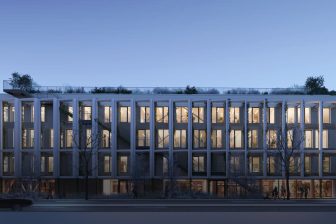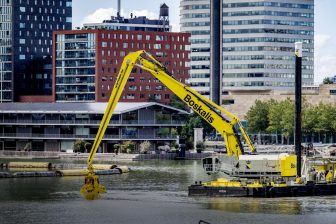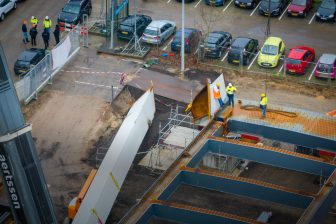Enhancing Competitiveness: The Role of Infrastructure
Canning House Conference, London January 21, 2008
Luis Alberto Moreno
President
I want to thank Canning House and its Chairman, Mr. David Thomas, for this invitation to speak to such a select group of business leaders.
I also want to thank the London Stock Exchange, British Expertise and UK Trade and Investment for convening this session on the role of infrastructure for enhancing competitiveness in Latin America and the Caribbean.
I have come to the UK almost every year to speak at various gatherings with private investors. Many of you have participated in these discussions.
As you know, Latin America is a key player in globalization. The increases in trade and investment flows are clear. In 2004, for example, 50 percent of China’s foreign direct investment went to Latin America. And currently the stock of UK Foreign Direct Investment to the region amounts to more than 12 billion pounds.
Latin America has shown itself to be economically sound, maintaining its position while being little affected by recent financial events. Although the epicenter of the current crisis has been mortgage-backed securities in the United States, the region’s securities markets have come out of the situation relatively well.
As you know, growth in the United States has slowed, and future projections have been adjusted downwards. However, the outlook for Latin America remains solid:
* Economic growth for the region in 2007 is estimated at 5.3 percent—the fifth consecutive year it has topped 4 percent.
* Exports increased around 21 percent, the fourth consecutive year with strong growth.
* Central government deficits are averaging just 0.3 percent of GDP.
* International reserves have increased very substantially, amounting to more than three times the value of short-term debt.
* Average inflation in the region is estimated at 5.3 percent, and low inflation has been maintained for more than a decade.
* Economic growth for 2008 is projected at around 5 percent.
We can argue that this projection is built on the hypothesis that the rest of the world will continue growing and that the Asian countries’ demand for raw materials will remain strong—which is not certain.
Within this context, the main challenge to the region is to ensure it makes good use of this extraordinary period of solid growth and high export prices. The outcome will depend in large part on the decisions made concerning infrastructure.
Access to high quality infrastructure is critical to a country’s competitiveness. “Global Competitiveness” ranking for the majority of LAC countries is between 50th and 70th, and a similar picture is obtained if we were to look at the “Infrastructure ranking”.
The rapid growth in foreign trade has highlighted the region’s serious deficiencies in infrastructure. Today, Latin America and the Caribbean invest only 2 percent of their GDP in infrastructure, while China invests 9 percent. In Latin America and the Caribbean, investments must be increased substantially in order to boost existing capacity.
The deficiencies also represent opportunities for investment, as one can clearly see when considering other sectors that are likely to be very dynamic in the future.
For instance, the production of cereals, meat and other foods faces increased restrictions in areas of Asia and Africa due to the scarcity of land and water. Net cereal imports by Asia and Africa, are projected to increase from 85 million tons currently to 265 million tons in 2030. Latin America has a comparative advantage to meet that future demand, which has wide implications for the investments that LAC should make for irrigation, roads and ports.
Other examples of opportunities could be given in the industrial, tourist and services sectors. The opportunities are there, we should make them happen.
It is estimated that the region’s economies must invest at least 10 percent of their GDP in financing infrastructure projects. Just in energy infrastructure, LAC requires US$ 1,380 billion dollars in the next two decades.
As it stands, Latin America is clearly far behind other regions in providing access to public utilities. More than 60 percent of businesses in Latin America report that electricity, telecommunications and transportation services present obstacles to their operations and growth.
Infrastructure has well-documented effects on competitiveness and economic growth.
There is no question that Latin America and the Caribbean need to increase their investments in this area if they want to keep progress at an acceptable level, which would enable them to reduce poverty and capitalize on opportunities offered by growth and international trade.
The region’s governments are taking notice of the lessons learned from the privatizations of the 1990s. They recognize that infrastructure is as much a public responsibility as a private opportunity, and that it will require significant resources.
The region’s governments are moving to implement frameworks that provide incentives for private investment and Public-Private Partnerships.
With the excellent news of Petrobras’s discovery of oil in the Atlantic Ocean, these types of arrangements will receive even more attention. Today Brazil is one of the top three countries in the world, along with China and India, for attracting private investment in Public-Private Partnerships.
Far from rejecting all forms of private participation and foreign investment in infrastructure, the public sector has a renewed understanding that partnerships with the private sector are, in many cases, the only way to have the resources, know-how and skill for carrying out infrastructure projects.
The IDB has supported infrastructure projects and given them high priority. In 2007, the Bank approved 21 projects valued at 3.4 billion dollars, including 10 private-sector projects for some 1.7 billion dollars.
We have been working on a range of initiatives in this sector and can point in particular to the Plan Puebla-Panama and IIRSA, reflecting the Bank’s involvement in sectors that are strategic for regional development.
In 2006, we created the InfraFund, as a way to design and develop sustainable projects. The Bank’s initial donation to the Fund was 20 million dollars, with the goal of promoting infrastructure projects that are essential for the region.
Another initiative, which is also in operation, involves resources for sustainable energy and climate change. This supports energy efficiency and sustainable energy projects. We also have an ambitious initiative in Water and Sanitation.
A key aspect when looking at these projects is to consider the various formulas for financing and managing infrastructure. The experience of the UK in PPPs is paramount. In order to attract companies, the Public-Private Partnerships need government funding to meet its payment schedule. They also need a suitable regulatory framework and effective judicial and dispute-resolution systems.
I think that these conditions exist in most of the region’s economies at this time, although it is true that in certain cases some ground remains to be covered. The Bank is committed here as well, by supporting the creation of an appropriate business climate.
At the Bank, we have identified a set of variables that are considered at the time we discuss the viability of infrastructure projects in general and for Public-Private Partnerships in particular. They are basically:
* The legal framework
* The political risk
* Macroeconomic factors
* Institutional capacity
* The users’ willingness to pay for services (especially in such critical sectors as water and sanitation)
* Sustainability of rates
* Project size, and
* Fiscal space.
In order to respond to the region effectively and to meet the challenges described, we have realigned the Bank. We had to do this to adapt ourselves to a region that is very different from what it was five years ago. We are becoming a bigger bank. Last year we hit a record figure of 9 billion dollars in approvals, because the region is growing, and we are creating new financial products.
We also want to seek out new partners, both in the private sector and in other multilateral banking institutions: the market is so big that we must come up with new ways of thinking in order to meet these needs.
In the last 12 months, we have increased financing limits from 75 million dollars to 200 million dollars for projects without sovereign guarantees. Our goal is to finance 15 billion dollars in the next five years, in the public sector as well as in the private sector.
We are a Bank that understands the region and the enormous differences among countries. That is why we are decentralizing the staff to our country offices. We have changed with the times, in order to respond better to our borrowing countries.
Infrastructure is not solely engineering works, but a clear manifestation of our intentions with regard to development. Luckily, despite the political differences among countries, this is one of the areas in which there is consensus among governments: we need more infrastructures because we know that this is the best way to distribute opportunities.
Foreign trade already represents 50 percent of Latin America’s GDP. But the potential for growth is enormous and it will happen if the limitations on infrastructure can be resolved. It is in this context that we look forward to a strong collaborative effort with UK firms, as we follow the route to create a more prosperous Latin America.
Thank you very much.
U las zojuist één van de gratis premium artikelen
Onbeperkt lezen? Profiteer nu van de introductieaanbieding voor € 10,- per maand.
Bent u al abonnee?



